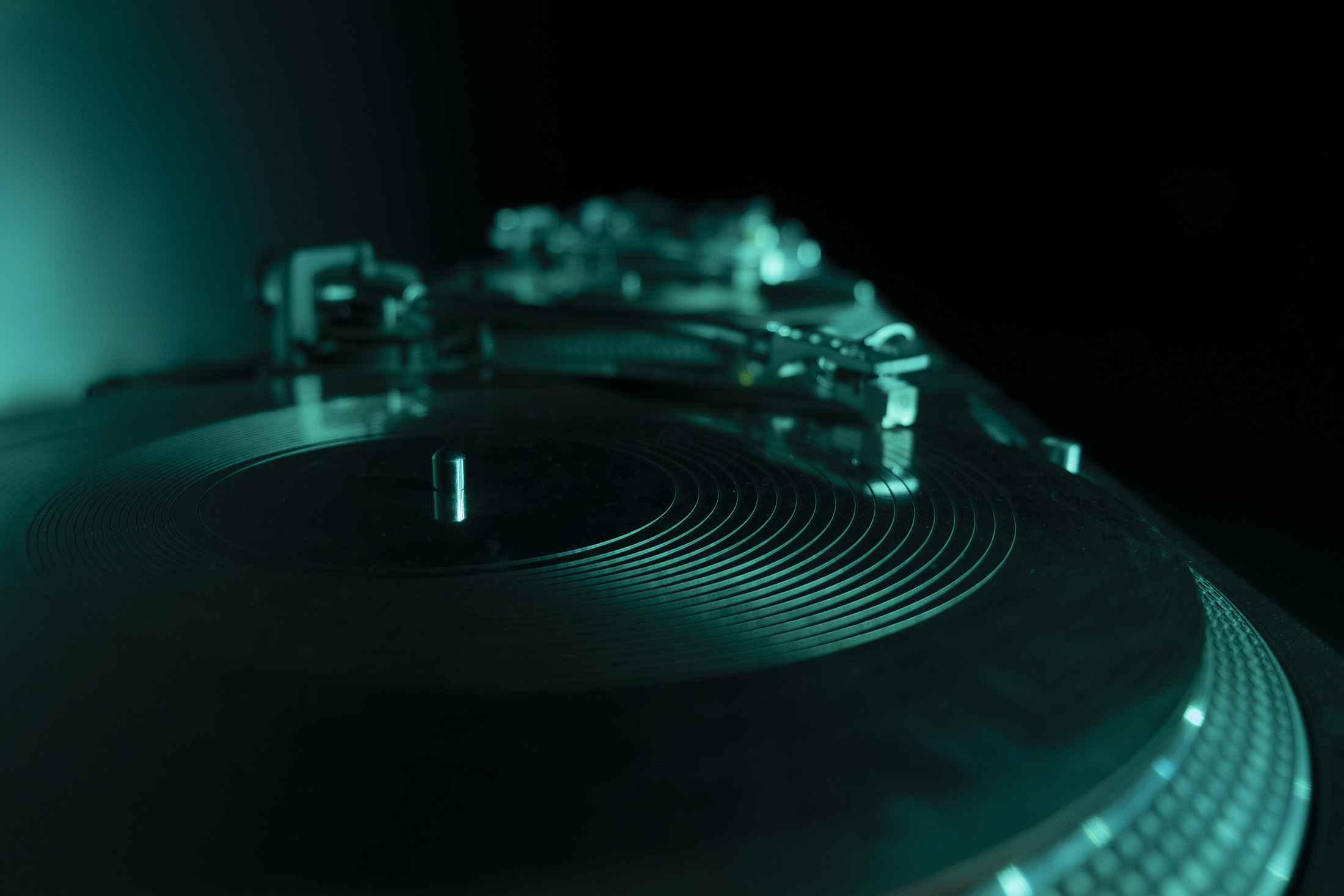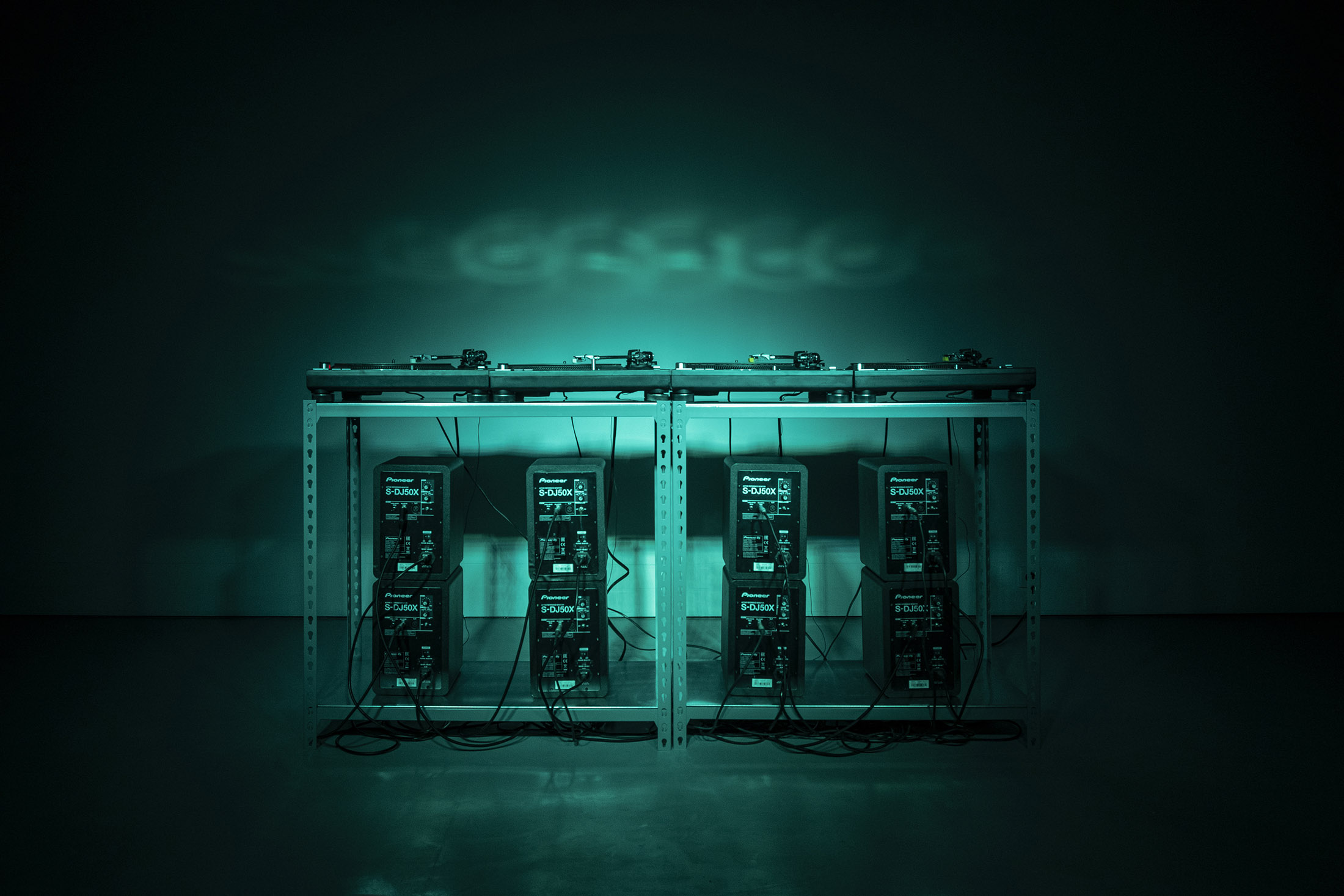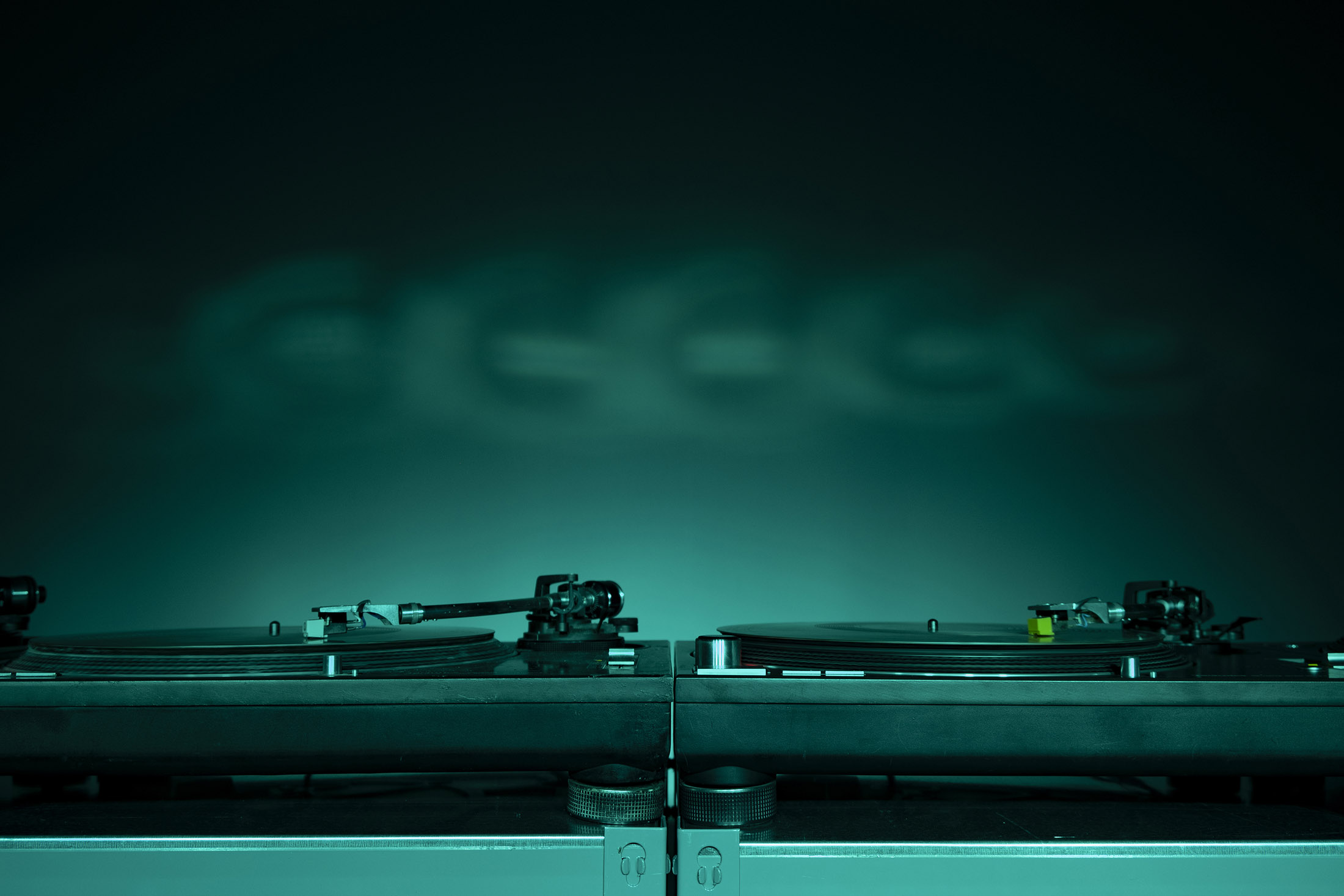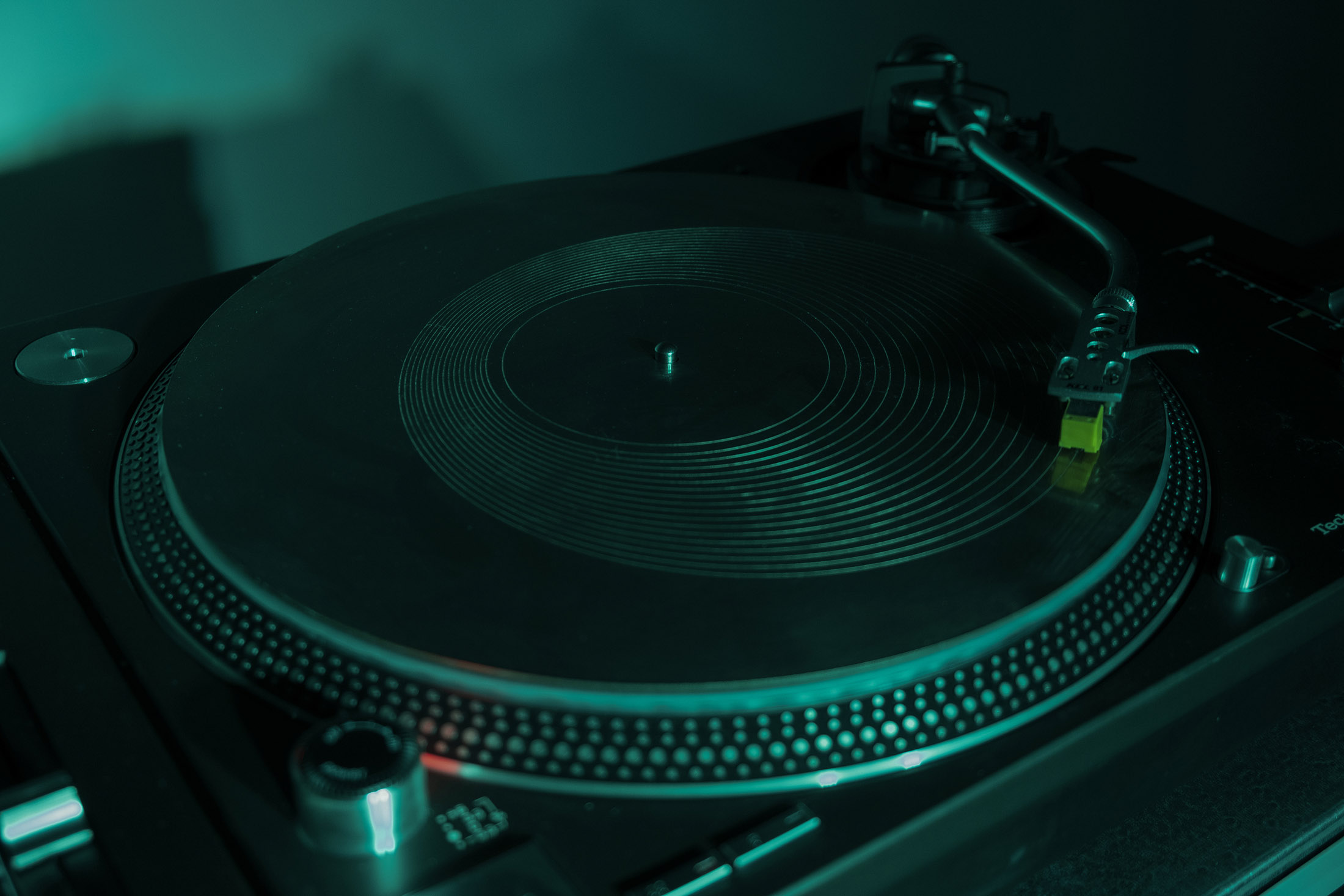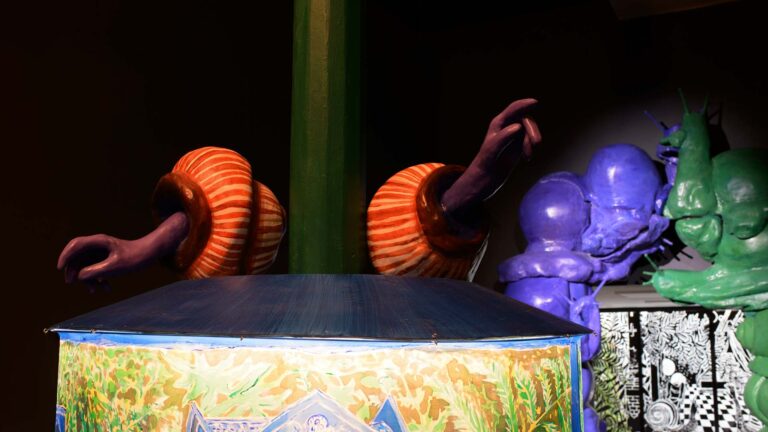Artist: Diogo Tudela
Exhibition title: Motordromo Sintético
Venue: FORM Space, Wageningen, The Netherlands
Date: May 14 – June 10, 2023
Photography: all images copyright and courtesy of the artist and FORM Space, Wageningen
Motordromo sintético as diagrammatic intervals
— Fourteen Inconclusive Techno-Logical Notes on the Work
The following text configures a series of sequential notes that try, miserably, one might add, to convey an account of incidental thoughts brought by the tooling of materials in Motordromo Sintético’s construction process. Their nature is completely unessential and should be taken as such — authorship and authority are not to be convoluted.
Special thanks to Tiago Carneiro, Carlos Milhazes, Olinda Cardoso and Vanda Trindade.
§1 — As a (computational) rework of Motordromo (2017), a sound installation that borrows its name from the wooden board velodromes and motordromes from the beginning of the 20th century, Motordromo Sintético (2023) calls upon itself yet another material and diagrammatic layer by adding a software stratum to the initial work.
§2 — The two initial iterations of Motordromo — the first from 2017, which made use of two turntables; the second from 2018, assembled with four turntables — relied solely on the analogical sound (and diagrams) produced by the turntables’ styluses tracing along eccentric grooves etched on copper discs. Traditionally, grooves on a record draw a concentric spiral, an inwards radial trajectory whose distance to the centre decreases linearly as a record is played. Time-wise, such schema grants a cohesive progression which, when referring to aural information, amounts to pitch stability — ideally, there can be no abrupt changes or events prompted by concentric spiral grooves. Being devoted to the celebration/instantiation of speed, Motordromo’s records’ grooves were etched as eccentric circumferences, transferring into copper, perhaps in the most literal or even trivial fashion, the diagrams used to describe the Doppler shift in physics.
§3 — The Doppler shift or effect describes the apparent change in frequency of a wave (eg. sound wave) perceived by an observer (eg. listener) whose relative position to a source, the emitter, is changing. This phenomenon can be prompted by either a moving source and a static observer, a static source and a moving observer, or when both source and observer are moving relative to each other. Such effect is quite common when standing next to a road or a racetrack: as a moving vehicle approaches, an observer will perceive the sound frequency of the engine (Fo : frequency perceived by an observer) as being higher than it actually is (Fs : frequency emitted by a source) —; as the vehicle passes by the observer will hear the actual frequency of the engine; and, as the vehicle leaves, the observer will apprehend its sound as being of a lower frequency.
§4 —The pervasive diagram to convey the Doppler shift is comprised of an array of eccentric circumferences with increasingly larger diameters, whose pitch — distance between them — changes across their radius. Denoting wave propagation, all circumferences will have their center located at the emitters position at exact moment of their formation (Tn ) — the moment when their radius is zero. As the wave progresses, and a circumference radius increases, the emitter proceeds in space (Tn+1 ), abandoning the coincidence between its position and the circumference’s centre. Since this event happens recursively — at a rate defined by the frequency produced by the source —, as an emitter moves, it leaves a trail of ghostly positions, locations previously occupied by the emitter that now serve as centres for abandoned waves still expanding in space. The offset produced by the emitter is thus responsible for the variable pitch — the distance between circumferences — across radiuses: the distance between circumferences neighbouring the emitter’s movement vector will be smaller, smaller distances amount to smaller wavelengths, smaller wavelengths amount to higher frequencies; the distance between circumferences neighbouring the vector opposite to the emitter’s movement will be bigger, bigger distances amount to bigger wavelengths, bigger wavelengths amount to lower frequencies. The location of an observer within this schema will define the perceptual shift in the emitter’s frequency.
§5 — For Motordromo and Motordromo Sintético, the eccentric circumferences found in the diagrams of the Doppler effect were etched into circular copper plates. Such techno-logical chaining — [diagram, Doppler, copper, etching] — can be deemed as an encompassing synthetic diagram in itself, one that hopefully, expands, or collapses, the paradigm of refinement found in the Doppler diagram (DD) — if such refinement is ever to be found in any diagram. The organising gestures that articulate this encompassing diagram (ED) were prompted by ill-structured alliances found/built between its terms, its nodes or, better still, in the extremities of its connecting lines. In being instantiated non-teleological works, the construction of both Motordromo and Motordromo Sintético are devoted to their own instantiation, which amounts to say that the construction of such constructions is forcefully dedicated to bringing them into being, in establishing themselves not as outgoing inquiries or problematizations, but as tractable solutions sustaining their own existence as they are, doing what they do. In arranging the nodes for ED, “diagram”, “Doppler”, “copper” and “etching” were tooled in order to transversally instantiate “speed” as speed. Such tooling relies on brief and incomplete notions, and on a sequencing of trivia brought forward and bent by formal and material forces of possibility: “Can this be done? Can this be put together?”.
§6 — ED[3]: Etching — The option of importingintaglioprintmaking techniques into ED recalls not only the velocity imprinted (in)to information by technologies of image reproduction but also by their reverberations into high-speed economics. As Lewis Mumford writes referring to wood-block printing, the first use for this adroit invention, it would seem, was the printing of playing cards — a characteristic contribution to the new spirit of gambling that went along with the early development of capitalism1.
§7 — ED[2]: Copper — Being the foremost material used for printmaking plates, namely in etching, copper’s materiality lends itself to speed and stability. Beyond its density of 8.96 g/cm3 (spatial resolution), which granted copper a pivotal role in image production and reproduction, this metal remains the preferred electrical and electronic conductor due to its superior conductivity of 5.96·107σ at a temperature of 20o (temporal resolution), being only surpassed by silver, and still adequately serving the high-speed demands of planetary computation.
§8 — ED[1]: Doppler — Etching the Doppler shift’s diagram into a copper record and playing it on a turntable — sounding the diagram in some sense — brings forward a peculiar commonality between the diagram’s marks and the phenomenon that it tries to capture. Since the record spinning on the turntable does so by revolving around its geometrical centre, and since unlike traditional records, the circular grooves on the copper plate do not share their centre with the record’s centre, the turntable’s stylus is forced inward and outward in a single revolution. When the groove’s radius is closer to the record’s centre, the stylus is pushed inwards, towards the centre; when the groove’s radius is farther from the centre, the stylus is pulled outwards. The oscillation produced by the stylus dragging across the equally distributed grains of etched metal is not simply a spatial event, but also a temporal one. As the record turns steadily at 331/3 or 45 rotations per minute (rpm), the distance covered by the stylus on a single rotation changes: if positioned next to extremities, the stylus covers a longer distance in a single revolution (faster); if positioned next to the centre, the stylus covers a shorter distance in the same amount of time (slower). By going faster or slower, the noise signal produced by the stylus tracing the metal mimics the inverse phenomenon described by the Doppler effect — just like any proper image (eg. real image) which relates in reverse to its object —, performing a perceptual change in frequency produced by a moving object.
§9 — ED[0]: Diagram — In being a scientific diagram, DD seeks to construct and refine the understanding of a physical phenomenon through the logical processes of thought. Despite sharing no common ground with the target being captured, the circumferences, lines and arrows on a simplified drawing manufacture and clarify towards the attainment of an existing truth. At least, as Kamini Vellodi describes, this seems to be the core function of a diagram from a Peircean perspective — Peirce’s diagram retains a resonance with the “common- sensical” notion of the diagram as a “simplified drawing” or “schematic representation” of something. It functions as an aid to knowledge, operating within the regime of what may possibly be known given the present conditions of thought, assuming a form that can be recognised, and oriented towards the formalisation of a future state that can be projected on the basis of present actuality2. In fact, the compliances between the geometries traced by DD and, which is more, its intervals, bear an elegant resonance with the mechanics and inner workings of the actual event. As far as fictions go, the fiction of the phenomenon is beautifully (intelligibly) laid down on its diagram.
§10 — Conversely, a Peircean account of the diagram cannot be as easily observed in ED. Encompassing DD, ED, the weaving of nodes that tie together “copper”, “etching”, “Doppler”, “and diagram”, as well as turntables, mixer, lights, still structure, etc., lacks the common-sensical graphic configuration that characterises the Peircean diagram as a schematic drawing. In addition, being an instantiated non-teleological work, ED, or Motordromo, or Motordromo Sintético, holds no commitment to the construction and refinement of truth. From a Peircean perspective, the absence of such an obligation would probably deem ED unfit for the category of a diagram. However, if, like Deleuze, thought as a non-place, constantly disturbed by changes in distance or by changes in the forces in relation as a place for mutation3, as an experimental synthesis of relations4, diagrams hold, in pure form, the potentialities of creation, of synthesis, thus not being solely committed to the construction and refinement of truth, but to the construction of difference and the “new” — a contract that ED is arguably capable of abiding by. Now, to separate DD and ED as being two distinct kinds of a diagram is a clear misuse of concepts — if imported, a Deleuzian perspective would also propel a reframing of DD and a retraction of its truth-seeking program. However, this fragile or even indefensible manoeuvre will be left untouched since the craft of constructing such works allows for these tyrannical whims.
§11 — As a closing remark on how “diagram” is (possibly) toyed with in Motodromo and Motordromo Sintético, if, as Châtelet argues, a diagram can transfix a gesture, bring it to rest, long before it curls up into a sign, which is why modern geometers and cosmologers like diagrams with their peremptory power of evocation. They capture gestures mid-flight; for those capable of attention, they are the moments where being is glimpsed smiling 5, then, to conjure the diagram as a gesture mid-flight, while addressing a formal and material construction grounded on the Doppler effect (Motordromo and Motordromo Sintético) brings forward a trivial but pleasant resonance, as the “difference” and “interval” of such reading seems to match the movement necessary for the Doppler shift to take place.
§12 — As stated before, departing from the conglomerate initiated by Motordromo, Motordromo Sintético adds a computational layer to the construction. Deploying custom-made software developed especially for its 2023 iteration (recursion) at FORM, Motordromo Sintético performs a sort of expanded synthetic Doppler effect on top of the one analogically provided by the record’s grooves. As the four turntables play the copper discs, each one at a different rotation, the signal from each turntable is individually fed into software written in Java and SuperCollider, which pushes forward the sonic manifestations of the Doppler shift as well as performing narratives that underline the notion of speed. Using a pitch-tracking function, the perceived frequencies produced by the styluses’ movements take place as the source frequencies of virtual emitters — this is a nesting of a digital Doppler effect fed by an analogical Doppler effect. The frequency values for these new synthetic emitters are thus integrated into four artificial spaces held together by the finite differentiatedness of characters (code). These computational spaces perform a conversion of the corresponding turntable’s rotation into linear velocities (m/s), and calculate a new Doppler effect using the incoming frequency as a new Fs(Fs’), a frequency from a source perceived as shifted (Fo’) by virtual observers wandering individually in each space. The frequency perceived by the virtual observer within each space (Fo’) is then both sent to a corresponding wavetable synthesizer and to yet another space occupied by a fictional vehicle. The vehiclewithin this second space is fuelled by the frequency perceived by the observer in the first space, triggering sound objects produced by a granular synthesizer every time it crashes against the boundaries of its enclosing area. Finally, the envelopes of the aforementioned wavetable synthesizer, that is also receiving the frequency perceived by the virtual observer, are modulated by the collisions of the vehicle drifting in the second space. This software can run independently, as it happens at FORM, or it can be manipulated in real time.
§13 — The inclusion of computational (typographical/digital) technologies into Motordromo deepens the fissures or intervals of our encompassing diagram (ED). For if the continuity and density found in the engraved diagram can be thought as being analogical, that is, to each point in space-time corresponds (analogy) an image (sound), such infiniteness cannot be found in notational systems — the intervals between points are groundless, and thus better thought of as leaps between extremities. Being as fast as it can be, the computational analysis of a stylus scraping metal is a discrete process, gathering differentiated data points over time. As Goodman explains, the curve of a chart showing annual car production over a decade merely joins the several numbered points to emphasise the trend, the intermediate points on the curve are not characters of the scheme, and the diagram is purely digital6. These notational groundless intervals seem to push Motordromo Sintético into Deleuze’s diagram, into a synthesiser of thought and free play — maybe that would be the case regardless of technical details, and perhaps that is the case for any instantiated non-teleological work. If thought as a synthesizer of thought
§14 — Have fun.
References —
1 Lewis Mumford (1952) Art and Technics. New York: Columbia University Press. ISBN 9780231121057
2, 4 Kamini Vellodi (2014) Diagrammatic Thought: Two Forms of Constructivism in C.S. Peirce and Gilles Deleuze in Parrhesia, No 19, pp. 79—95. ISSN 18343287
3 Gilles Deleuze (2007) Two Regimes of Madness: Text and Interviews 1975–1995. Los Angeles, CA: Semiotext(e). ISBN 9781584350620
5 Gilles Châtelet (2000) Figuring Space: Philosophy, Mathematics and Physics. Berlin: Springer Science+Business Media Dordrecht. ISBN 9789048152872
6 Nelson Goodman (1976) Languages of Art: An Approach to a Theory of Symbols. Indianapolis, IN: Hackett Publishing Company. ISBN 9780915144341

